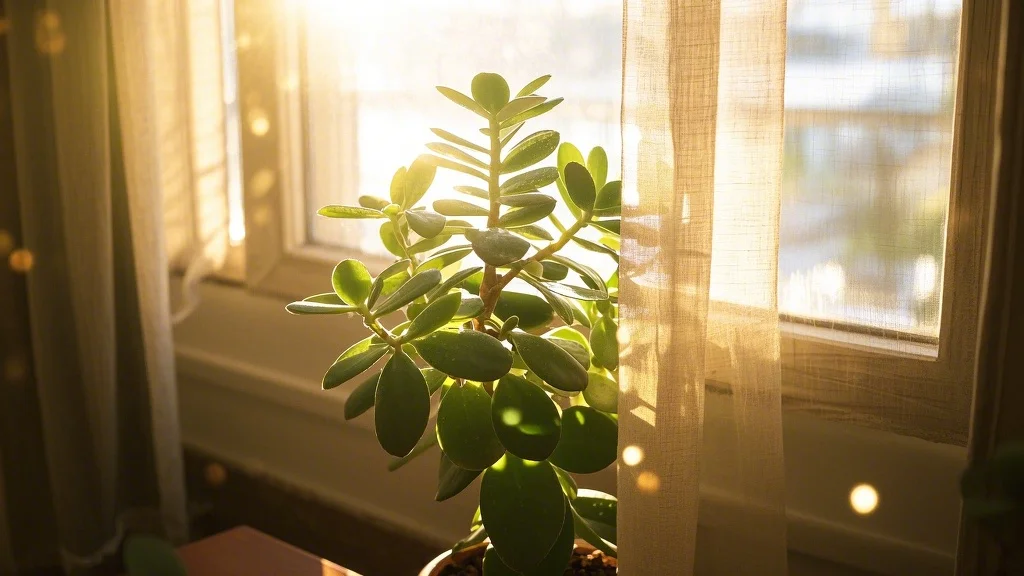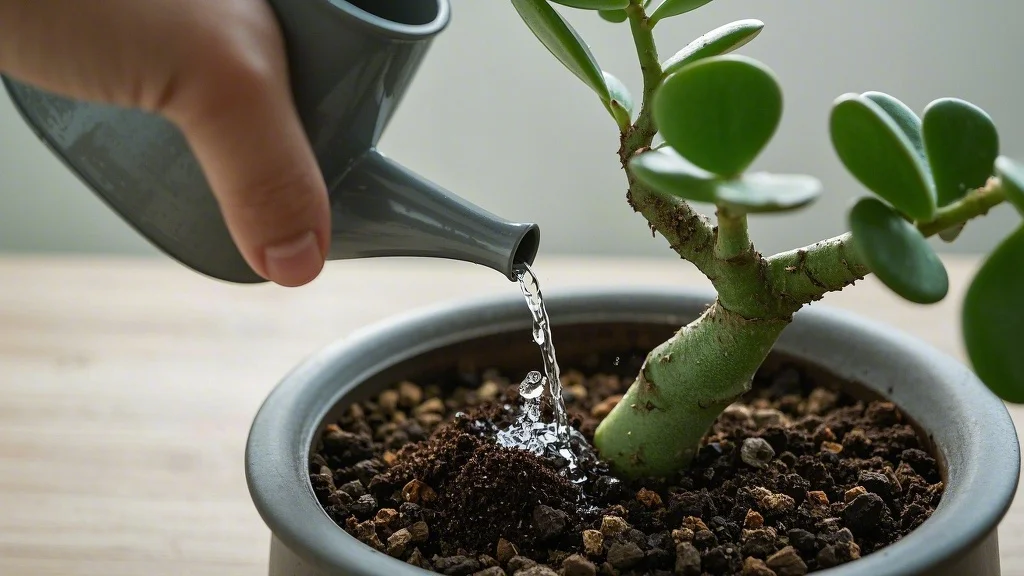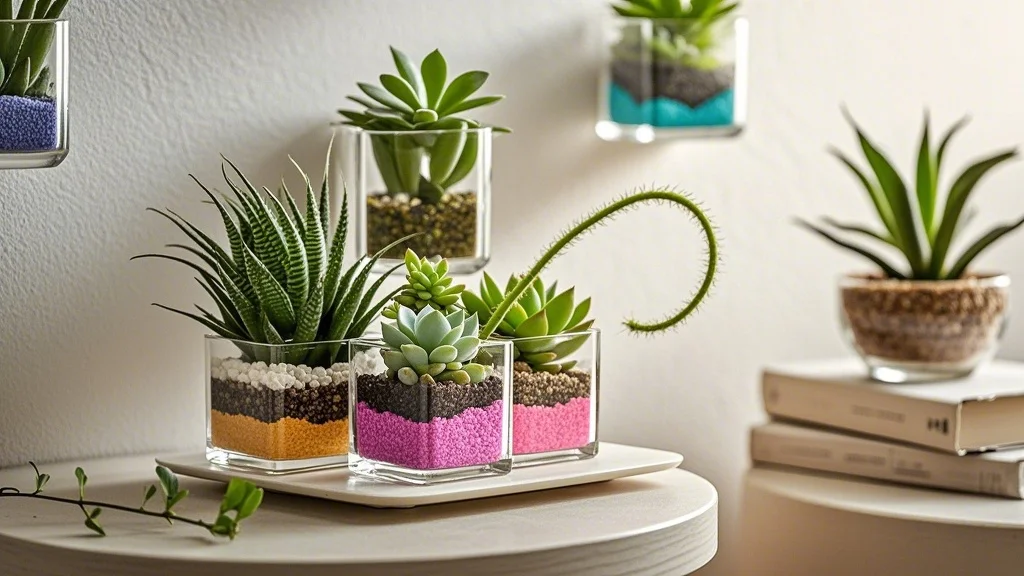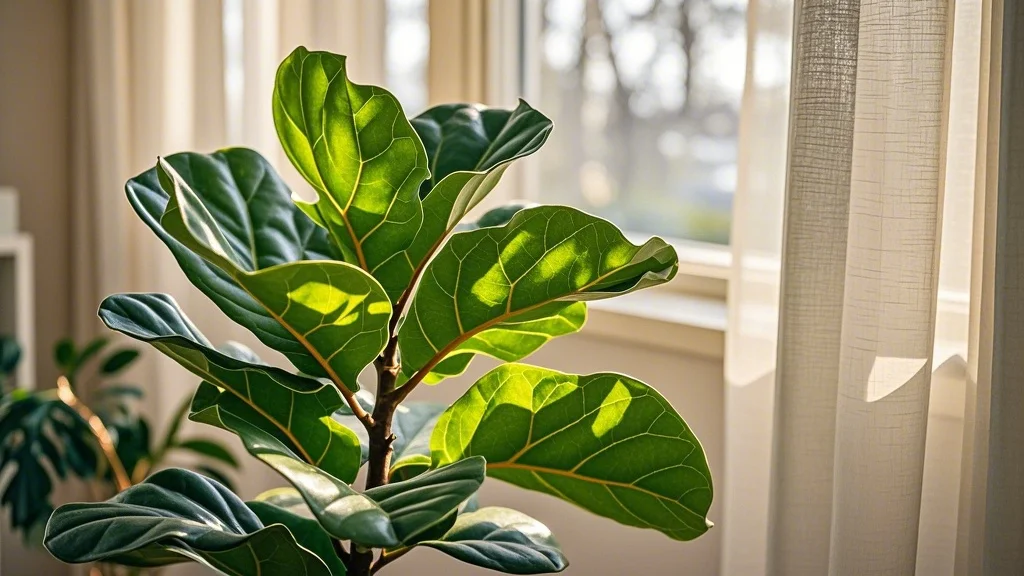Jade plants (Crassula ovata) are beloved succulents known for their thick, glossy leaves and tree-like appearance. Often called “money plants” or “lucky plants,” these hardy succulents are perfect for beginners and experienced plant enthusiasts alike. With proper care, jade plants can thrive indoors for decades, growing into impressive miniature trees.
Difficulty Level: Easy to Moderate
Contents
Basic Information
- Scientific Name: Crassula ovata
- Common Names: Jade plant, money plant, lucky plant
- Native to: South Africa and Mozambique
- Plant Type: Succulent
- Toxicity: Mildly toxic to pets if ingested
Quick Care Guide
- Light: Bright, indirect light
- Water: Allow soil to dry between waterings
- Humidity: Low to average
- Temperature: 65-75°F (18-24°C)
- Soil: Well-draining succulent mix
- Fertilizer: Monthly during growing season
Detailed Care Instructions
Light Requirements

Jade plants thrive in bright, indirect light. They can tolerate some direct sunlight, especially in the morning or late afternoon, but too much intense sun can scorch their leaves. In their natural habitat, jade plants grow under the partial shade of larger plants, so mimicking these conditions indoors will help your plant flourish.
Place your jade plant near a south-facing window for optimal light exposure. If you don’t have a south-facing window, an east or west-facing window can also work well. Just be sure to monitor your plant for signs of inadequate light, such as leggy growth or pale leaves.
During winter months when daylight is scarce, you may need to supplement with grow lights to ensure your jade plant receives enough light. LED grow lights are energy-efficient and can provide the right spectrum of light for healthy growth.
Watering Guide

Proper watering is crucial for jade plant care. As succulents, jade plants are adapted to store water in their leaves and stems, making them drought-tolerant. Overwatering is one of the most common issues faced by jade plant owners.
Follow these watering tips:
- Allow the soil to dry out completely between waterings.
- Water deeply but infrequently, ensuring water drains from the pot’s bottom.
- Reduce watering frequency in winter when the plant is dormant.
- Use the “soak and dry” method: thoroughly water the plant, then wait until the soil is completely dry before watering again.
To check if your jade plant needs water, stick your finger about 2 inches into the soil. If it feels dry at that depth, it’s time to water. You can also lift the pot – if it feels light, it’s likely time to water.
Remember, it’s better to underwater than overwater a jade plant. These succulents can tolerate drought but are susceptible to root rot if kept too moist.
Common Problems and Solutions
1. Yellowing or Dropping Leaves
Cause: Overwatering is the most common cause of yellowing or dropping leaves in jade plants.
Solution:
- Reduce watering frequency and ensure proper drainage.
- Check for signs of root rot and repot if necessary, using fresh, well-draining soil.
- Adjust your watering schedule to allow the soil to dry out completely between waterings.
2. Leggy Growth
Cause: Insufficient light can cause jade plants to become leggy as they stretch towards light sources.
Solution:
- Move your plant to a brighter location, ideally near a south-facing window.
- Rotate the plant regularly to ensure even growth.
- Consider supplementing with grow lights if natural light is limited.
- Prune leggy growth to encourage bushier development.
3. Brown Spots on Leaves
Cause: Brown spots can be caused by sunburn, pest infestations, or fungal diseases.
Solution:
- If sunburn is suspected, move the plant to a location with less direct sunlight.
- Check for pests like mealybugs or spider mites and treat with neem oil or insecticidal soap if present.
- For fungal issues, improve air circulation and avoid getting water on the leaves when watering.
Buying Guide and Essential Supplies
When purchasing a jade plant, look for the following:
- Healthy, plump leaves with a vibrant green color
- No signs of pests or disease
- Well-established root system (gently tug on the plant to check)
- Compact growth habit without excessive legginess
Essential supplies for jade plant care:
- Well-draining pot: Choose a pot with drainage holes to prevent water accumulation.
- Succulent potting mix: A commercial cactus and succulent mix or make your own by combining regular potting soil with perlite or coarse sand.
- Watering can with a narrow spout: For precise watering at the soil level.
- Moisture meter: Helpful for beginners to gauge when to water.
- Pruning shears: For shaping and removing dead or damaged growth.
- Grow lights: Optional, but useful for supplementing natural light.
Recommended products:
- Espoma Organic Cactus Mix
- Mkono 6″ Ceramic Planter with Drainage Hole and Saucer
- Felco F-6 Classic Pruning Shear
- Sansi 15W LED Grow Light Bulb
Frequently Asked Questions (FAQ)
1. How often should I repot my jade plant?
Jade plants prefer to be slightly root-bound and don’t require frequent repotting. Generally, repot every 2-3 years or when the plant outgrows its current container. Choose a pot only slightly larger than the current one to prevent overwatering issues.
2. Can I propagate my jade plant?
Yes, jade plants are easy to propagate. You can propagate from stem cuttings or even individual leaves. Allow the cut end to callus over for a few days before planting in well-draining soil. Keep the soil slightly moist until roots develop.
3. Why are my jade plant’s leaves wrinkled?
Wrinkled leaves usually indicate underwatering. If the soil is completely dry and the leaves feel soft and pliable, give your plant a thorough watering. The leaves should plump up within a day or two.
4. How can I encourage my jade plant to branch out?
Pruning is the best way to encourage branching in jade plants. Cut back the main stem or long branches to promote bushier growth. Each cut will usually result in two new growth points, creating a fuller plant over time.
5. Is it normal for my jade plant to develop a red tinge on its leaves?
A red tinge on jade plant leaves is often a sign of stress, usually from intense light or sudden temperature changes. While not harmful, it indicates that your plant might benefit from slightly less direct sun or more stable temperatures.
By following these care instructions and tips, you’ll be well on your way to growing a healthy, thriving jade plant. With its easy-going nature and attractive appearance, the jade plant is an excellent choice for both novice gardeners and seasoned plant enthusiasts looking to add a touch of green to their indoor spaces.








